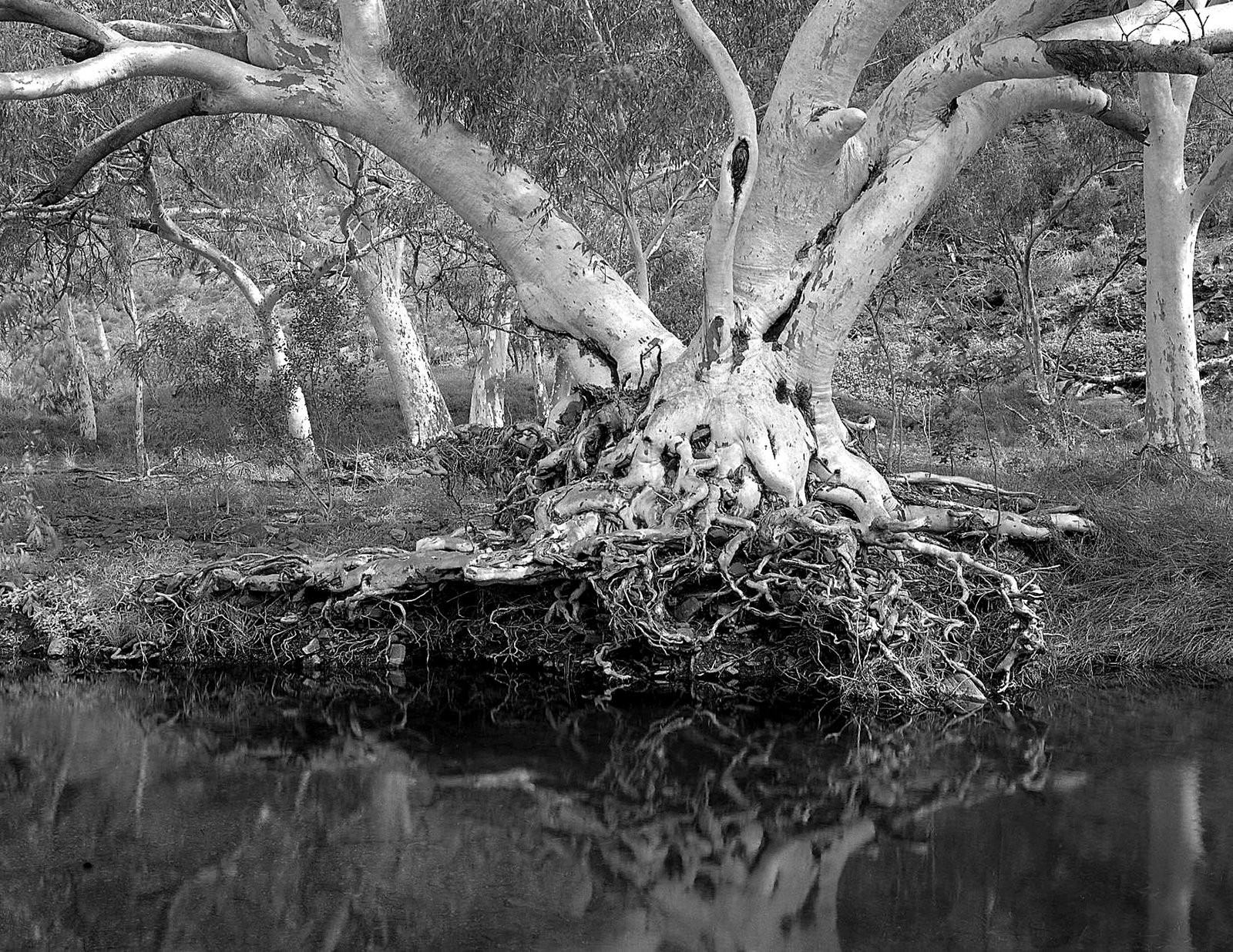
Around Australia on a motorcycle with a 4×5 camera. Part three – Janet Naismith
The third and final chapter in Janet Naismith & Gary Chapman’s epic 1991-1992 around Australia trip.
This is the final chapter in our adventures and as we leave the Claire Valley in South Australia behind us the wide-open spaces beckon with sunshine and endless skies.
The early settlers have left stone ruins in ploughed fields and we stop to photograph in the early morning light. We ride into a plague of grasshoppers, splattering themselves all over everything but we ride on to Wilpena Pound. We start the climb to St Marys Peak early and 8 hours later reach the peak, Gary used his filters here and this is where he lost them – maybe they were taken by the feral goats that we saw!
The weather is gloomy so Coober Pedy is our next camp, the road is flat no trees only enormous skies and the ground is covered by hundreds of mullock dumps that look like a giant animal has gone mad digging holes. The weather continues bitter, windy, and millions of tiny flies make it hard to photograph so we give up, visit the tourist attractions, marvel at the opals, then stop for the day.
We travel along the Stuart Highway to Uluru -Kata Tjuta National Park and next day Uluru loams up in the distance; at last we have arrived. To our surprise we can ride on a made road around Uluru which is vast and overwhelming up close, we feel the ancient spirit in the shifting light and caves: this is a special and spiritual place going back thousands of years. Next morning, we get up early to photograph the dawn light which changes the colour of Uluru to a glowing orange colour, incredibly beautiful. We can see the Olga’s in the far distance the rocks glow pink with deep purple shadows against the red soil of the area.
We are in the realm of long-distance riding and need to keep up the pace as we head for Western Australia, but first back to the Flinders Ranges via Port Augusta and Hawker. On the way to Hawker the road passes through Horrocks Pass the light is amazing and we stop for photos of ruins and peppercorn trees. We leave Hawker on a cold frosty morning and at last the weather is clear. This time we ride directly to Parachilna Gorge along a bitumen road with Lake Torrens (Salt Lake) on our left. The road into the Gorge is gravel but at last we set up camp and pull the cameras out.
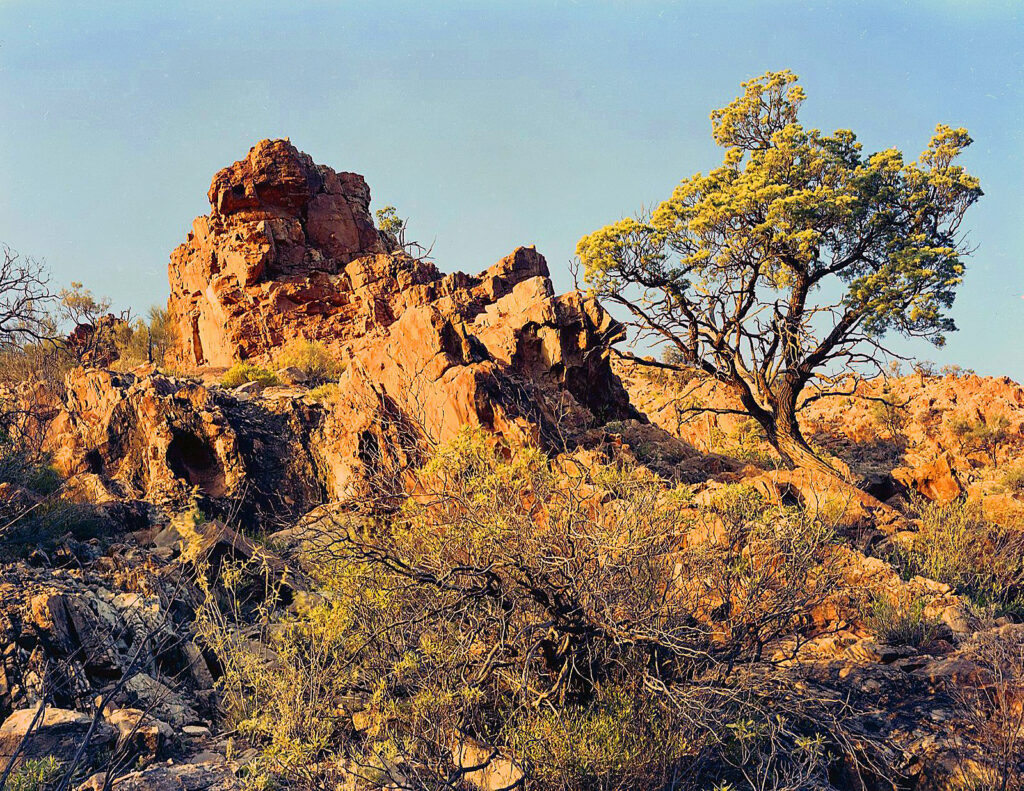
The Flinders Ranges National Park is outstanding with gum trees, rocks and the variety of colours of the landscape is unique. Gary is inspired to use his 4×5 colour film and we walk in gorges and up and down ranges; up at dawn for the early morning light. We move onto Brachina Gorge, the weather has stayed dry and we are camped once again in a creek bed. Four days later the weather is changing, and we reluctantly move onto Hawker, then Whyalla, Port Lincoln, Streaky Bay, Murphy’s Haystacks where huge granite outcrops look like haystacks from a distance.
At end of May we arrive at Ceduna where we stop to plan our trip across the Nullarbor Plain, change tyres on the bike, stock up with food and check our gear. On the first night we camp off the road with not a tree in sight just salt bush stretching to the horizon. We had planned to take 4×5 images on this iconic highway, but the weather has other ideas. Mostly the climate is arid with 184 mm rain a year (Sydney has 1.175 metres of rain a year). We woke up at dawn with low heavy clouds on the horizon a sliver of yellow at the bottom of the clouds. The rain has set in and road conditions are dangerous. Massive road trains roar pass us making visibility difficult and Gary decides to pull up at the small settlement of Eucla where we book a cabin as the rain has made the verge and camping sites far too wet and slippery with mud to be safe on the bike.
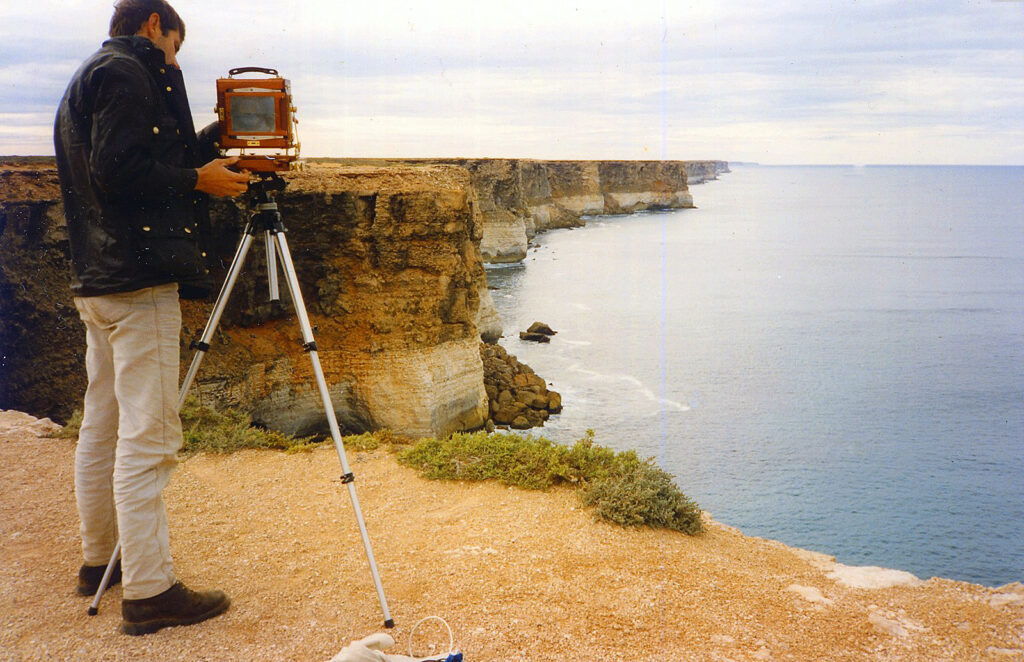
As we settle into the cabin, without warning an incredible explosion occurs making us rush to the road through a cloud of smoke. Three road trains have crashed; two head on and the third one’s load crashes into the mess. A police officer arrives at the top of the bend in the road. He shouts at us to go down to the wreckage and do what we can for any survivors. A road worker turns up and the three of us enter the crash site, we can see flames under the mangled cabins, then a feeble arm waves at us. We duck under the twisted metal pulling the man out; his injuries are serious though they do not seem to be life threating. The flames are becoming worse so we must move fast, we lay him on a blanket from his cabin, then we run along the gravel downhill with the shocked driver bouncing on the blanket pulled behind us. Just as we get to the end of his road train the first of three explosions strike. It then occurs to us that we must move further away to avoid flying metal and flames. The road catches on fire due to the diesel run off as more road workers turn up and start digging trenches to divert the flames from us. Once we are out of danger, I have a closer look at the driver who has become my patient as I am the only registered nurse for many, many kilometres.

The road trains are burning fiercely – so many rubber tyres – the only people who can help are the road workers on the west side of the accident as the road is blocked by flames across the east side. The rain and wind are relentless and the road gang erect an awing over the patient and myself – my concern is he may go into shock – then out nowhere an ambulance arrives driven by the nurse stationed at Eucla. She has taken an hour to get to us on a different road. She rings the Flying Doctor but it won’t arrive until the night. We care for the patient for seven hours but it is still raining and the road to the airstrip is washed out. Again the road gang come to the rescue and grade the road to the air strip with us travelling in the ambulance behind. Cars line up with their head lights on to guide the Flying Doctor in. Our patient is stable with good vital signs when we hand him over to the Doctor and as they fly away we clean up the mess in the ambulance. What a day feel lucky to be alive! Back at the cabin we find the wind has driven rain under the door flooding the floor and we are ankle deep in water with all the gear we wished to keep dry now wet. We look forward to leaving the Nullarbor in the morning.
We wake to an overcast day with the crash site still burning, including the road. Time to move on to Esperance where we are hoping to photograph the Great Australian Bight. We are lucky to have a small widow of clearer weather, Gary has the 4×5 out fast and he has his image, a miracle it seems to us after yesterday’s catastrophic events. Cape Le Grande National Park appears in all her wonders; a long sweeping beach, blue green seas, marvellous rock formations and an excellent camp site sheltered from the wind. The cameras are working overtime – black and white film and colour transparencies – Gary sticks to the 4×5 format. We would love to stay longer, but time is catching up with us.
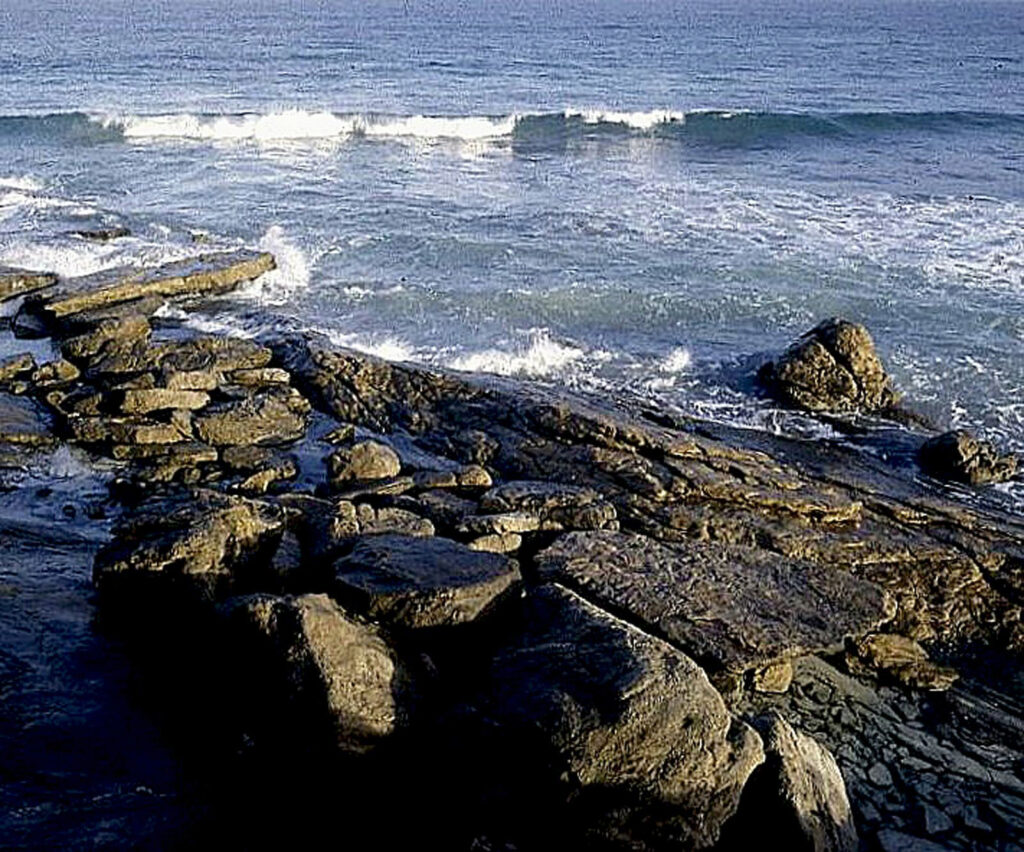
It is June, and the vast Western Australia coast has become our master imposing longer days on the bike and shorter camps. We make brief stops at the Stirling Ranges National Park, Coalmine Beach, Valley of Giants, and camp at Walpole where the fellow camped next to us throws petrol on his fire burning the front of his tent, but luckily avoiding serious burns. Never a dull moment!
Perth is our next stop and we stay with friends while the bike is serviced and two tyres replaced before we head onto the Pilbara. The Western Australian Coast seems endless, but we have left the rain and wind behind and stay at Cervantes to photograph the Pinnacles at dawn which do not disappoint. It is a mad rush to find the most interesting combination of these amazing structures. Onto Shell beach, three hundred kilometres away. The shells are so hard packed that we can ride the bike along the beach and we camp on the beach for dawn images. The coast road is endless and we feel like snails as we slowly creep towards the Hamersley Ranges, the gateway to the Pilbara.
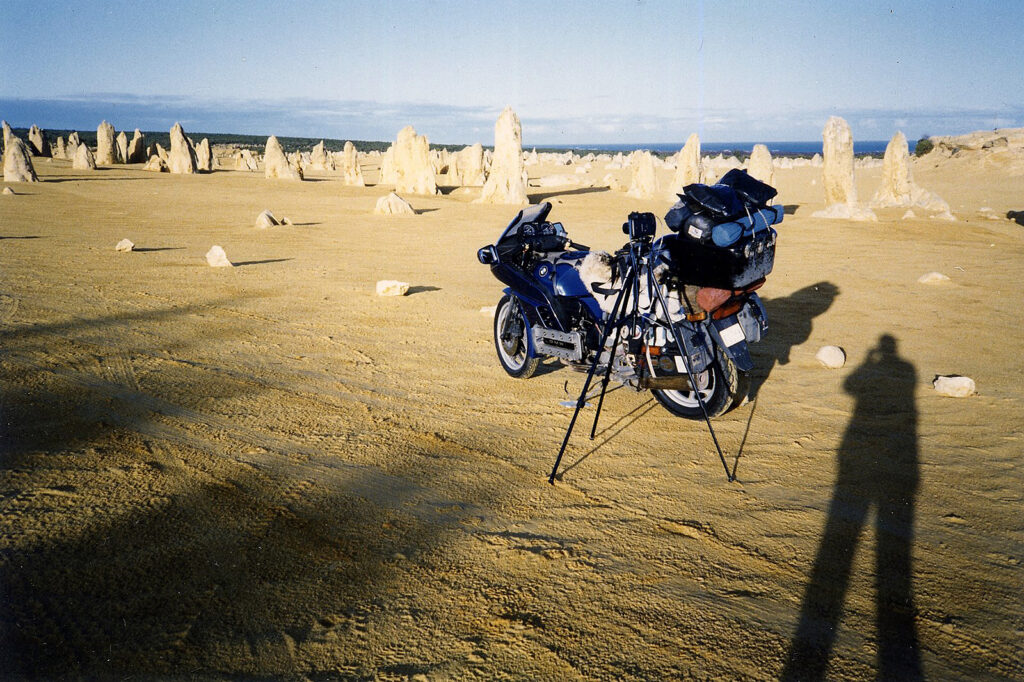
Wittenoom a ghost town since asbestos is dangerous to human health, why are we here? To take photos of the red dirt ghost gums in Hancock Gorge. We see the asbestos mines with the tailings falling into the river. Only one shop is still open, this area will soon be a no go zone. We move onto Weano Gorge 200 kilometres away, red dust covers everything and Gary has a challenging time just staying upright on the bike. Once again, the colours are amazing, strata walls of purple red and pink show the layers of ancient seabeds in this gorge.
Dales Gorge is 80 kilometres away and there is no water available so we must carry 16 litres of water with us. Water is strapped to Gary’s back and on various parts of the bike. Taking it slow we make it to the Gorge with relief. At the next camp there is a circular pool at Fortescue Falls and we spend two days here photographing and walking. It is magical. At one point I slip and fall in, grabbing a root and holding my camera above my head. It is very cold! I am extremely glad to have saved the camera as Gary pulls me out.
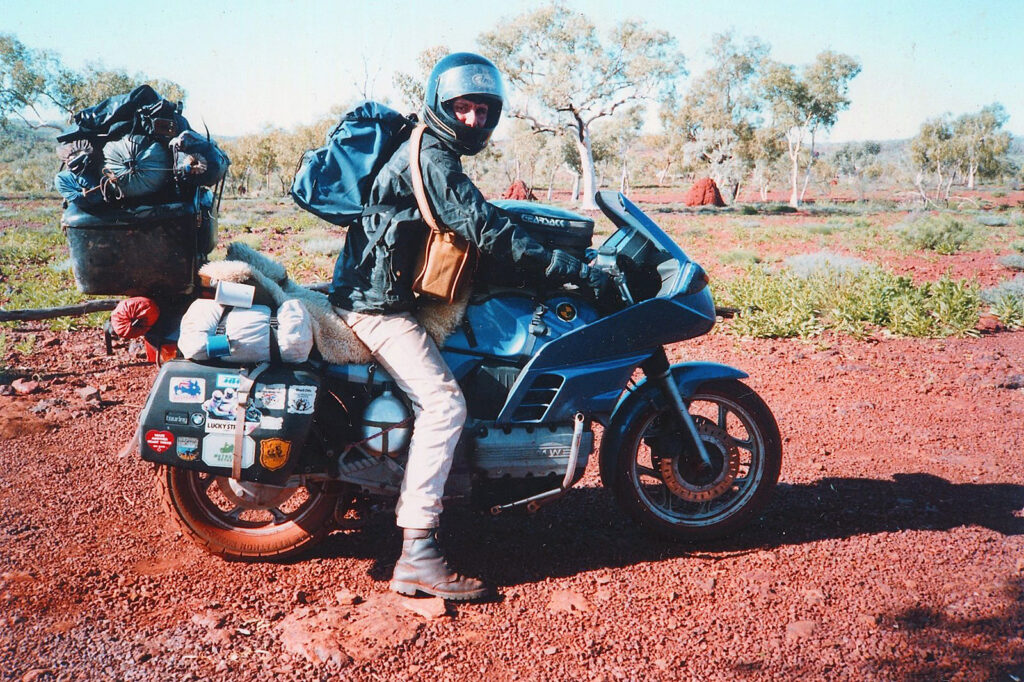
July is here and we have not reached Broome, 600 kilometres away. We pace ourselves and stay at 80-mile beach. We are the only people here and we can see forever along the shoreline. When the tide goes out the sea disappears from sight it is so far away. Good images for the cameras here. Finally, Broome! Red dirt, green and blue seas, long white beaches, sunrise lights up the cliffs deep red. Good photos are made. It’s time to head for home in Queensland.
We fast track it as school holidays mean people are everywhere. In mid-July we camp at Kurrimine Beach under a coconut tree, close to Innisfail. Lovely warm Queensland weather at last. We have managed to travel thirty-nine thousand kilometres over the two years.
We tour the Atherton Table lands taking in the Millaa Millaa Falls and this area feels like home so we buy five acres of land on the Waterfall Circuit Road, Gary builds his first darkroom, we live here for twenty-seven years, happily photographing the falls and wonderful rainforest in this much kept secret of Queensland on our doorstep, but we have never forgotten our epic trip around Australia.
Parts one and two can be seen here.
Main photograph above: Ghost gums. Pilbara. Westen Australia. Gary Chapman.
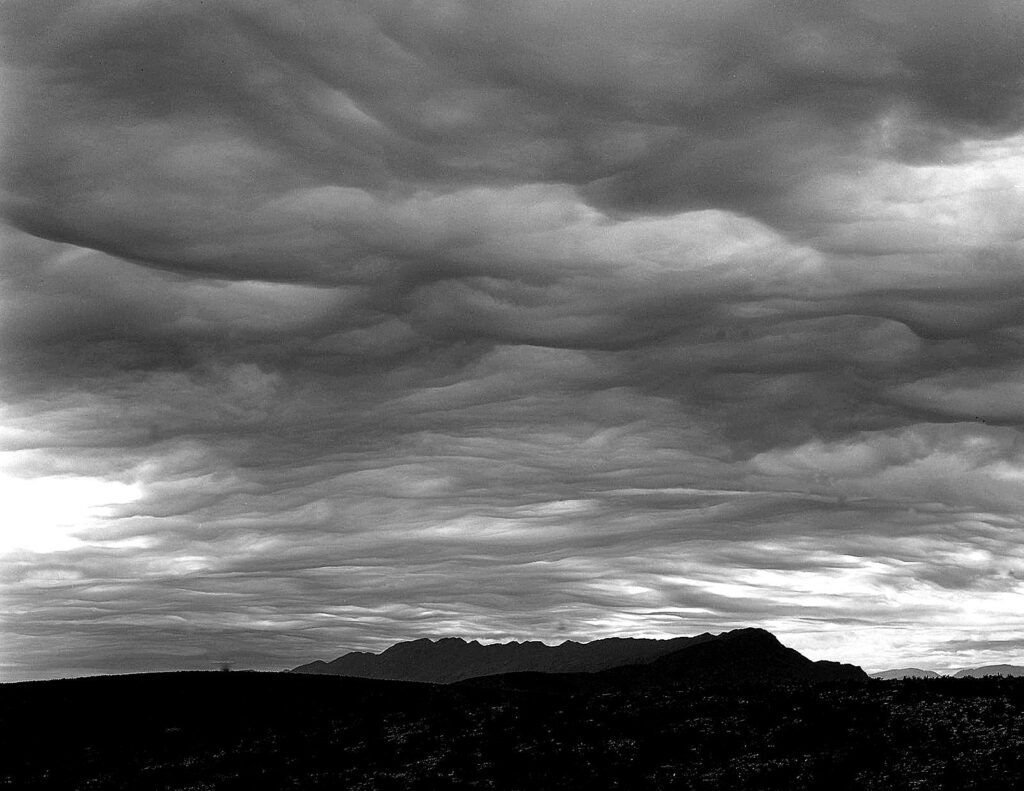

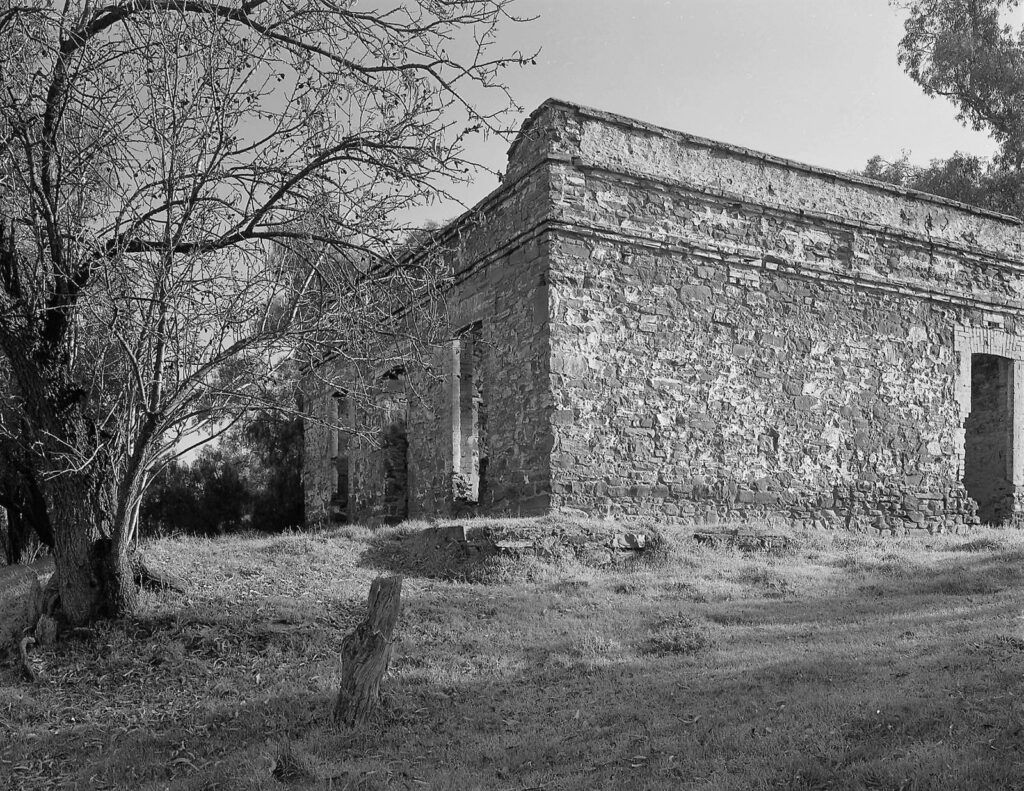
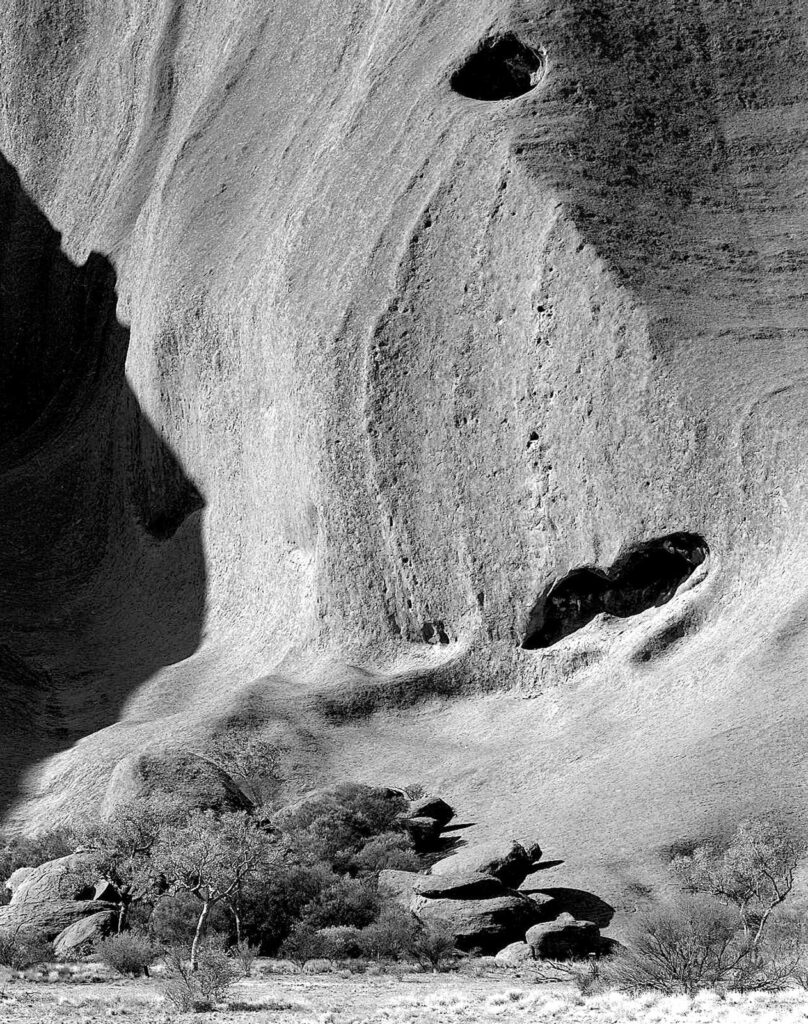

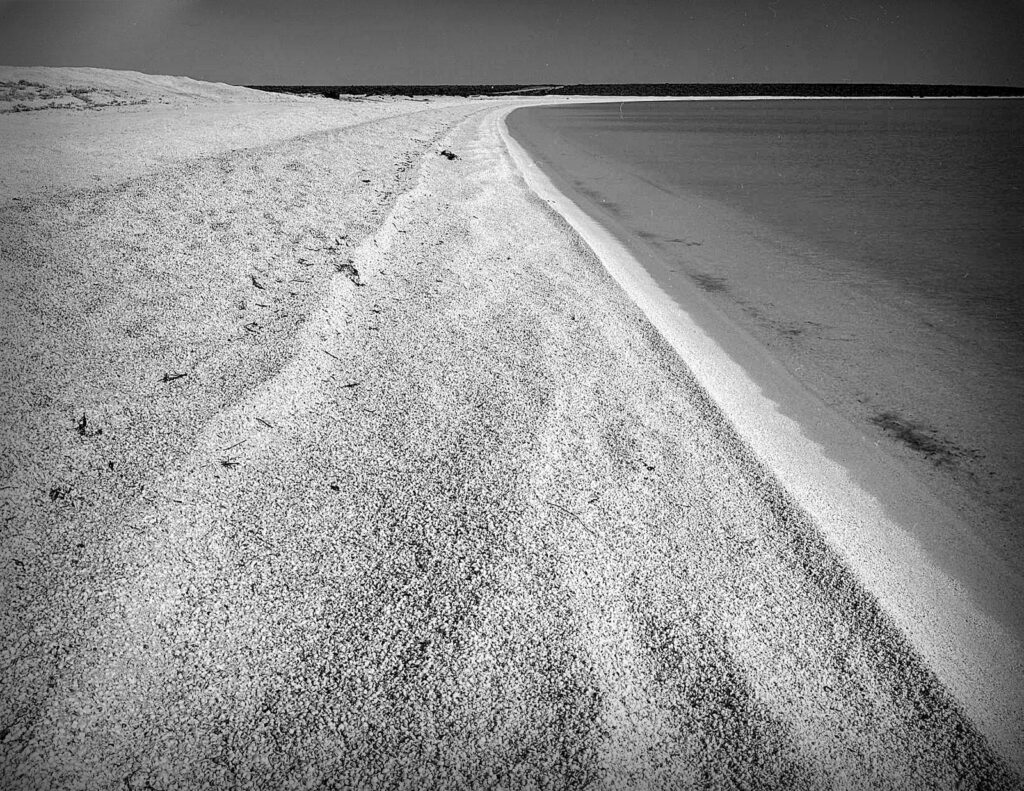
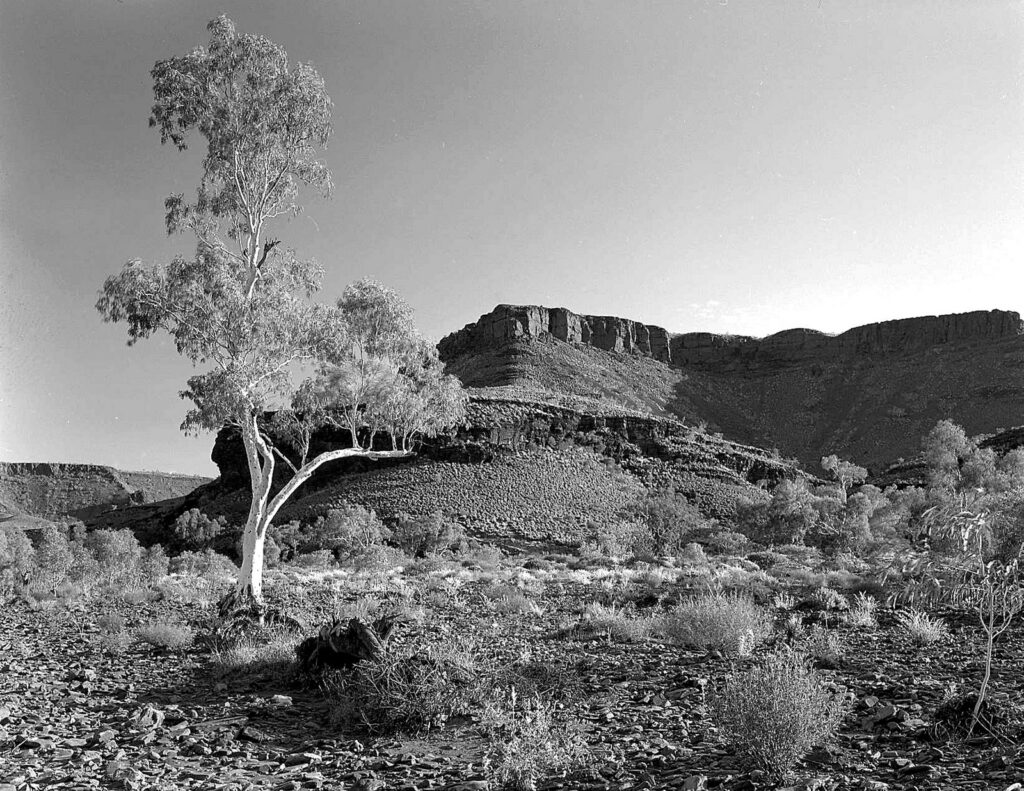


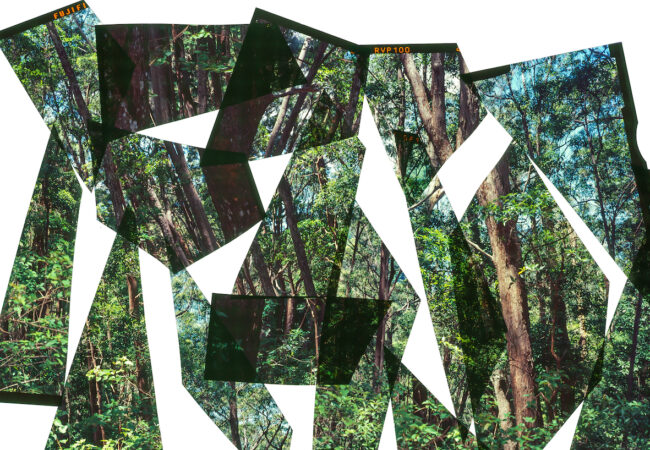



Jan,
This a wonderful read with great images. The tones and composition of the monochrome landscapes are outstanding.
Mick.
Thank you Mick, Gary appreciates the comments, and thanks for reading our adventure with a 4×5 field camera.
Thank you, Janet and Gary, for a fantastic series of articles and photographs. It was certainly an epic trip and you covered far more of our country than most Australians will ever see in a lifetime.
Mark thank you for taking the time to read our story as you can appreciate, space that David kindly gave us we had to condense the other places we visited and photographed. Yes I think we have traveled far and wide in this country and there is still more to see.
Travelling thirty-nine thousand kilometres over the two years on a motor bike and making 900 medium format (Janet) and 900 large format (Gary) images is the very definition of an epic Australian road trip. It would make for a great photo book.
Is that under consideration?
Gary Sauer-Thompson
Thank you for reading our trip essay yes we have thought a lot about making our adventure into some type of book form, we have left many areas we visited out, due to space allowed for the View Camera site story, I was always aware that the story centered on the photography.
There are many human elements to the story and yes it was epic- as the motorbike had three hundred thousand on the clock before we left.
Digital was in its infancy and mobiles where in the future. In terms of time on the road it was one year when we started our trip in July 1991 and arrived back in Nrth Queensland July 1992.
We would appreciate advise on how a book could be considered.
You probably would have to self-publish the book–ie. pay the editor and the printing and sell/ distribute the book yourself. There would not be many publishers who take on the book themselves as the photography market in Australia is very small.
Your best bet would be to find a small independent publisher near where you live who loves publishing books and they would have the expertise (designer, editor etc ) and the contacts to guide you through the book making process. They would also know the most suitable printers for your black and white images. That means you have to put up the money upfront to pay for their services and see it slowly recovered from sales.
My advice is to think small—you have so much good material that you need to break it down rather than make one big book. For instance, you could do a number of books over several years that show different aspects of the roadtrip and the photography. Take your time with it.
Start by chatting with a local independent publisher who is interested in publishing literary, art and photography books.
Gary
We thank you for your advice. You have given us a some very sound advice. We appreciate you taking time to respond to our request.
We will think about our readers as the story on View Camera is mainly about the photography and how we achieved our images, however there is another story for bike enthusiasts riding epic trips.
Many thanks for your advice.